Andre Norton: Gateway to Magic, Part II
Andre Norton’s two-book series Judgment on Janus and Victory on Janus
(Fawcett Crest, December 1979 and January 1980). Covers by Ken Barr
Part I of Andre Norton: Gateway to Magic is here.
Two other fun books by Norton that I read between ages 12 and 16 were Judgment on Janus and Victory on Janus. In Judgement, a down and out young man named Naill Renfro ends up on the planet Janus, which is ruled by a group of religious fanatics from Earth. There are artifacts on Janus from a native civilization, which is thought extinct, and Renfro finds one but is contaminated by it and begins to mutate. Turns out, he’s mutating into a native of the planet, a changeling, if you will. He flees into the vast forest of Janus.
When I first read this book, I was caught up in the rousing adventure, which had elements of the Sword & Planet genre. Only with a later read did I realize all the things going on underneath the surface, the condemnation of religious fanaticism and racism, and the criticism of a corporate world of excess. I came around to that way of thinking myself many many years later. She was ahead of her time here.
[Click images for a gateway to larger versions.]
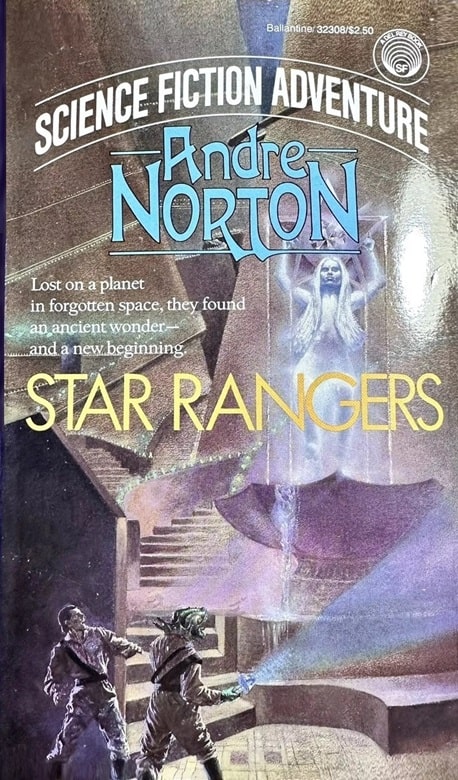 |
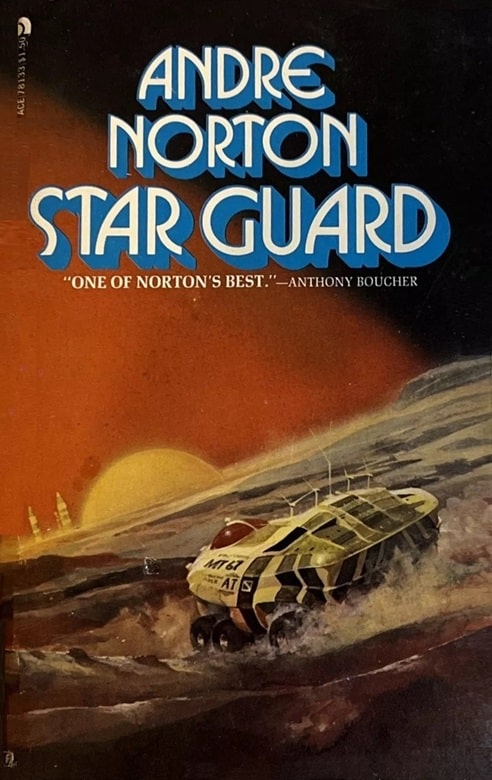 |
Star Rangers (Del Rey/Ballantine, August 1985) and Star Guard
(Ace Books, June 1973). Covers by Laurence Schwinger and Chris Foss
I also read a book called Star Guard, which as one of my readers Stephen Davidson pointed out, preceded Heinlein’s Starship Troopers by several years. Star Guard is better, with quite a bit more action. Only years later did I find that Star Guard was a sequel to Star Rangers, and I quickly picked it up. I like them both but Star Guard has a special place in my memories.
One of my readers also mentioned that chronologically within the story, Star Guard is a prequel to Star Rangers, but I can’t locate that comment now. Anyway, that’s correct. I just looked it up. Rangers was published first but Star Guard is an early story in what is called Norton’s Central Control series. I saw there’s also a book called Star Soldiers, a collection of the other two.
Star Soldiers, an omnibus collection of Star Guard and
Star Rangers (Baen, August 2001). Cover by Stephen Hickman
Although quite a few of Norton’s books contain elements of Sword & Planet fiction mixed with Space Opera, her Witch World series started out as primarily S&P. In Witch World, first in the series, an earthman named Simon Tregarth, who fought for the USA in World War II, makes enemies who want him dead. He finds a way to escape, not only his enemies, but Earth itself.
He ends up on the “Witch World,” where primitive weapons and magic rule. He meets, not a princess, but a witch, one of a powerful group of women who wield magical power. They eventually have three children named Kyllan, Kemoc and Kaththea.
Spell of the Witch World (DAW, June 1975), Trey of Swords, Warlock of the Witch World,
and Three Against the Witch World (Ace Books, July 1978, August 1974, and March 1983).
Covers by Michael Whelan, Charles Mikolaycak, J. H. Breslow, and John Pound
The entire Witch World series is a sprawling epic and one of the more complicated ones in SF/Fantasy. In addition to writing about Tregarth and his family, Norton explored many other characters and elements of the world. I read the first four and then sampled elsewhere in the series, but I can’t tell you all the relationships.
Only the first two feature Simon Tregarth (Witch World, 1963, and Web of the Witch World, 1964). Then there are three featuring their children (Three Against the Witch World, 1965, Warlock of the Witch World, 1967, and Sorceress of the Witch World, 1968).
The collection Lore of the Witch World (DAW, September 1980) and novel
Sorceress of the With World (Ace, 1968). Covers by Michael Whelan and Jeff Jones
After the second Tregarth centered book, Norton wrote Year of the Unicorn (1965), which is set on Witch World but doesn’t involve the Tregarth family. Most of the other books in the series were written quite a bit later, starting in the 1970s and 80s, and deal with other corners of the world.
After Book 2, Web of the Witch World, the series left its Sword & Planet roots behind and moved toward Sword & Sorcery, and then toward what I’d call High Fantasy. Three Against the Witch World is my favorite of all that I’ve read. But they’re all pretty good and she was able to create a fully realized world.
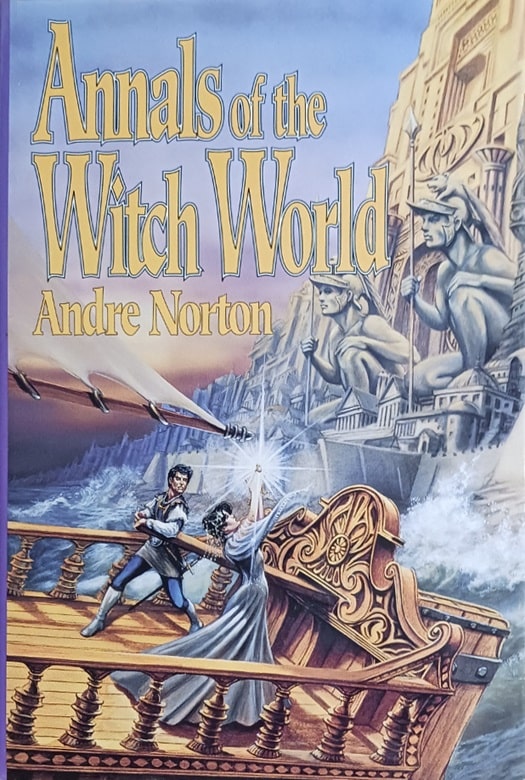 |
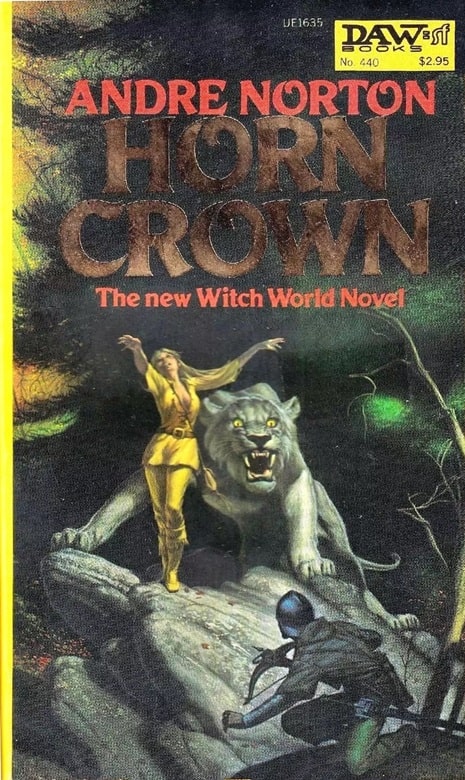 |
Omnibus Annals of the Witch World (Science Fiction Book Club, August 1984) and
Horn Crown (DAW, July 1981). Covers by David A. Cherry and Michael Whelan
Annals of the Witch world contains Witch World, Web of the Witch World, and Year of the Unicorn. It has a great cover by David A. Cherry, who I don’t remember seeing work from before. Jack Gaughan did the cover and some interior illos for Year of the Unicorn. Spell of the Witch World, Lore of, and Horn Crown have covers by Michael Whelan.
Trey of Swords’ cover is Charles Mikolaycak and I believe Warlock is by J. H. Breslow. Three Against the Witch World is my favorite cover here, by John Pound. Sorceress of the Witch World is the great Jeff Jones, tied for my favorite among these.
Charles Gramlich administers The Swords & Planet League group on Facebook, where this post first appeared. His last article for Black Gate was Andrew Offutt’s Greatest Contribution to the Genre: Swords Against Darkness.
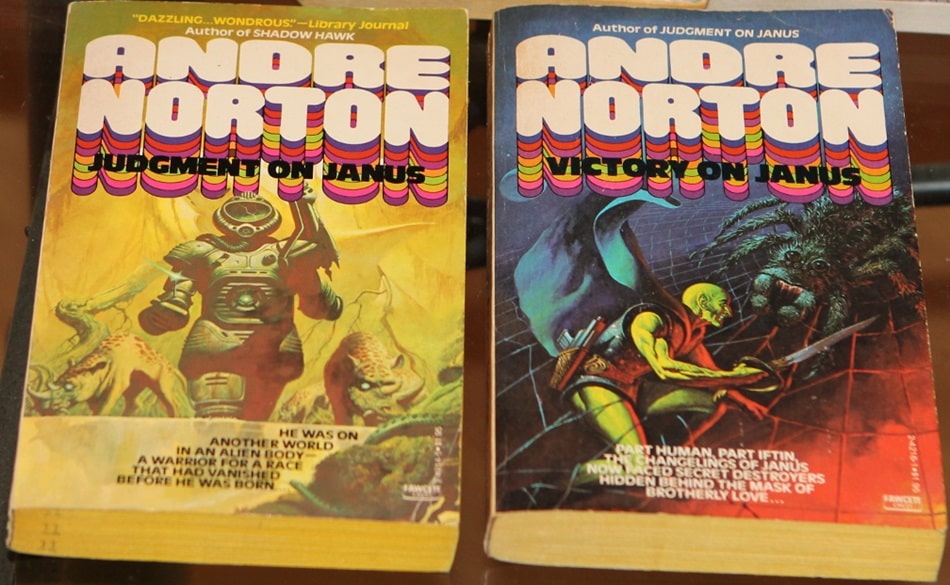
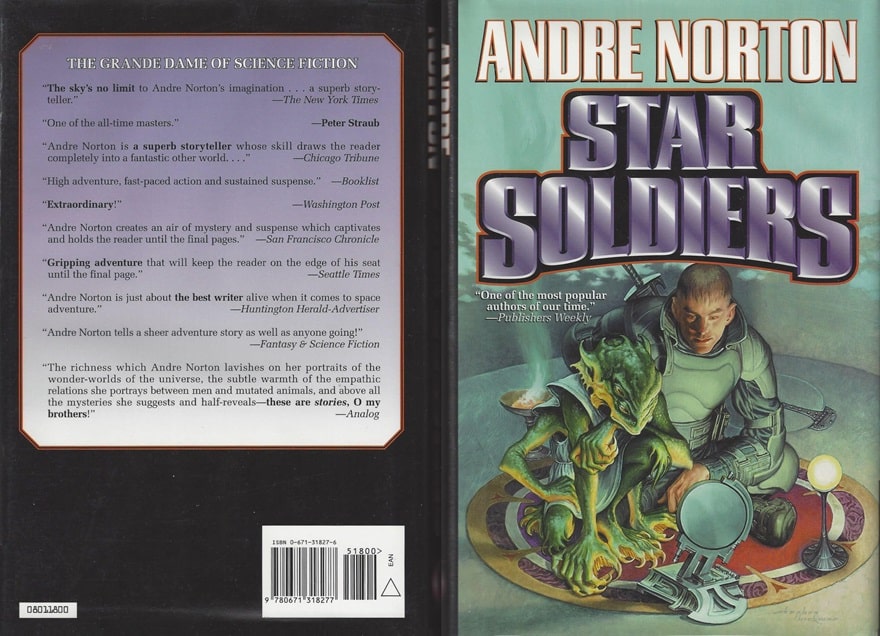
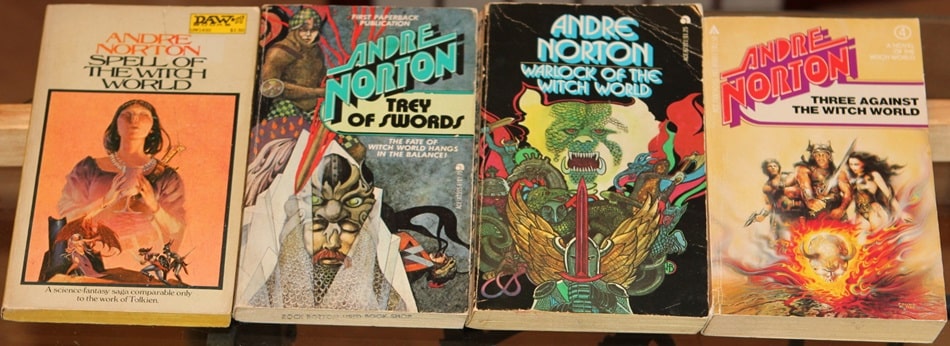
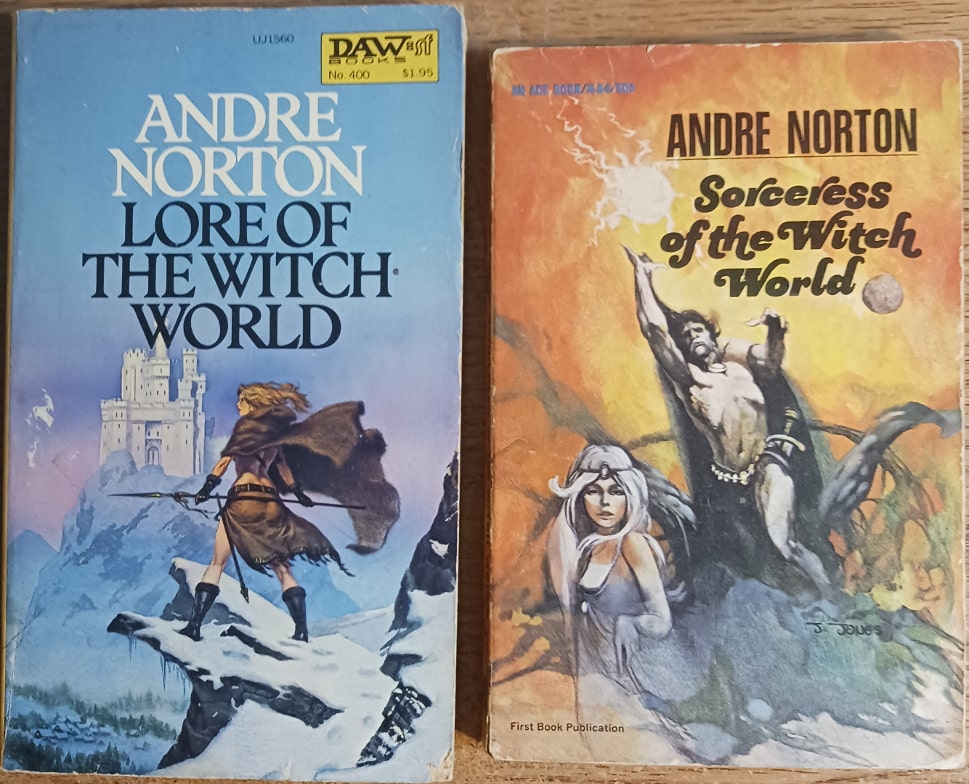
Surely Star Guard is a prequel to Star Rangers. In Star Rangers, Earth is a lost and forgotten planet, with only scattered low-tech inhabitants. In Star Guard, it’s well known to the galactic government and is being exploited as a source of mercenary soldiers, and it still has cultures familiar to 20th century readers, such as the hero’s Polynesian background.
It’s not to be wondered at that the storyline of Star Guard is exciting; it was taken from Xenophon’s Anabasis, which has been considered a good story for around 2500 years.
William, if you’re talking about the timelines of the stories, then you’re absolutely right. The story in Star Guard happens first, and the story in Star Rangers happens second along the timeline. If you’re talking about the publication order, Star Rangers was published in 1953 and Star Guard in 1955. That’s why I referred to Star Guard as a sequel, but I probably should have used a different word or phrase, perhaps saying something like “Only years later did I find that Star Guard had been preceded in publication by a book called Star Rangers, which takes place in the same universe.’
I think that’s what the word “prequel” was coined for: to designate a work that was published later but was earlier in internal chronology. Though I’ve occasionally seen it used to mean just “earlier book in a series,” which is a different and much broader category.
Prequel would be the better word then, although I’d still want to include the dates of publication.
I’ve read all of these books, but it has been quite a while since I did. Time to revisit some of the Queen’s tales of adventure. Thank you for the reminder, Mr. Gramlich.
John, there’s never enough time in my experience to do all the reading I’d like. I often pick up these books and want to sit down and reread them right then, but there’s so much out there. I do enjoy my memories of my first read though.